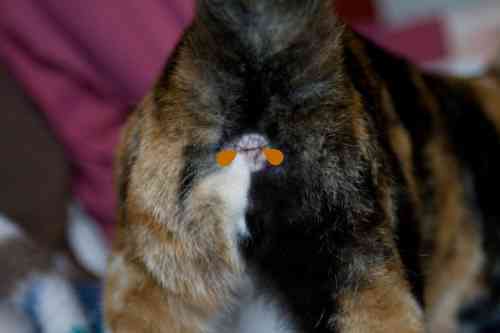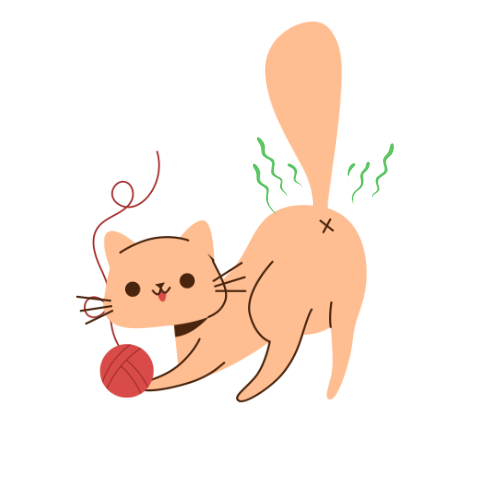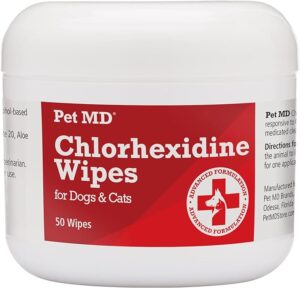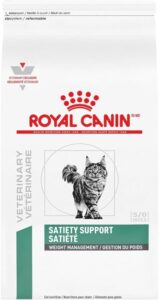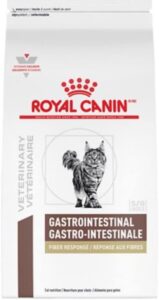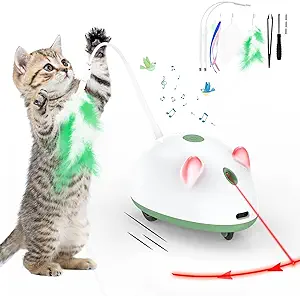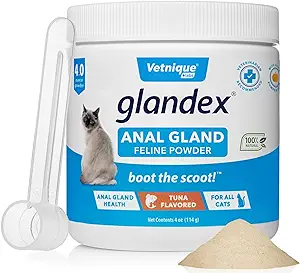Anal glands in your cat
What if they are inflamed?
Your cat’s anal glands can become overfilled quite easily. And if that is the case, they can also become inflamed as a result. In this article we explain the function of the anal glands, where they are located and what symptoms you see if your cat suffers from his anal glands. We also discuss the diagnosis and treatment. And of course also what you can do yourself to prevent overfilled or inflamed anal glands in the future.
What are anal glands in your cat?
Your cat’s anal glands are two small glands on the side of your cat’s anus. You can think of them like two small balloons, where the opening is very narrow and ends in the anus itself. If you imagine the anus as a clock, your cat’s anal glands are located at approximately 4 o’clock and 8 o’clock.
A pasty fluid is produced in the anal glands, the anal gland fluid. This substance stinks enormously and has a somewhat sickly sweet, fishy-like odor. In one cat the fluid is off-white-colored, in the other it is almost black. The color therefore says nothing about the quality of the anal gland fluid.
The reason this liquid is made by your cat is convenient. Every time your cat poops, he will also spread some of the glandular contents over his feces by contracting his anal muscles. In other words, your cat’s feces have a very specific smell that differs from the smell of any other cat. After all, the anal gland fluid has its own specific smell in every cat. But we humans don’t smell that difference, to us they all smell just as bad. But cats know from that smell who has pooped where and therefore who has which territory. Of course, this function is not of much use in our household, but it is still very useful to have for outdoor cats.
What causes the cat’s anal glands to become inflamed?
Inflamed anal glands in cats only occur when the anal glands become overfull and they cannot get rid of the fluid sufficiently themselves. We also call inflamed anal glands “sacculitis” in veterinary language. You have to imagine that the anal glands look like a balloon. If the balloon keeps getting bigger, at some point the wall of the balloon can no longer handle it. At that moment the wall cracks. A real balloon will then burst. But with anal glands, anal gland fluid will seep through the wall and cause an inflammatory reaction in the surrounding tissues of the anal glands.
Because there are always many bacteria living in that region, the inflammatory response will also quickly become infected with bacteria. Your cat’s body then tries to clear the mess by making a small hole in the skin next to the anal gland and therefore in the skin next to the anus. The anal gland fluid will then come out through that hole so that the body can clean up the rest. There is often also some blood involved. The anal glands can become to full for a number of reasons:
-
-
- The shape of the anal gland may have grown incorrectly in their young days.
- Due to temporary diarrhea, the anal glands may have difficulty emptying, resulting in overfilling. After all, you usually don’t have to strain so hard if you have diarrhea. So the muscles don’t squeeze the glands.
- The drainage channels can become too narrow, for example if your cat has too much weight. The fatty tissue will partially or even completely close the openings.
- The contents of the anal glands have thickened due to insufficient drinking.
-
What symptoms does a cat show with inflamed anal glands?
If your cat suffers from overfilled anal glands, or even really inflamed anal glands, your cat will initially feel an itchy, nagging feeling in his anus. He will then lick a lot and spend an excessive amount of time washing his anus. If it gets worse, you will see that your cat will rub its bottom against objects. In most cases they then rub their buttocks on the ground. We also call this scooting. When the anal glands become really overfilled and start to become inflamed, your cat will actually be in pain and will make a plaintive noise. His anus will protrude. In extreme cases, an inflamed anal gland can also cause a fever, making your cat lethargic and eating poorly.
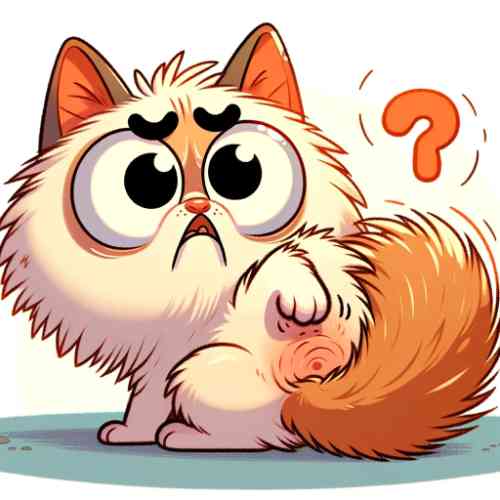
How do you examine your cat’s anal glands?
If your cat’s anal glands are overfilled, your cat’s anus is often somewhat thickened and you will see a bit of a thickening on the side of the anus. This is often on both sides, but that does not always have to be the case. You may also notice that the side of your cat’s anus looks very red and that your cat expresses pain when you touch that region. If you find it difficult or dirty, you can visit your vet. He or she will then immediately empty the anal glands for you.
Treatment of overfilled anal glands in your cat
As long as the anal glands are not yet extremely inflamed, it is sufficient to empty your cat’s anal glands. If they are extremely inflamed, it will be extremely painful for your cat to empty them. In that case, it is better to have it done by your vet as he or she knows how to hold your cat safely and then empty the anal gland very quickly. However, very occasionally anesthesia is necessary because otherwise it will cause too much stress and pain for your cat. In case of a severe form of anal gland inflammation, your vet will prescribe antibiotics and painkillers for your cat.
But is your cat still in the stage of licking and rubbing his buttocks a lot? Then it is sufficient to empty the anal glands. You can do this by first putting on disposable gloves. Otherwise you will still have smelly hands for 3 days that you cannot wash off. Then place a cloth of paper towels over your cat’s anus. You can use toilet paper for this, but your cat will feel more comfortable if you use some kind of soft wipes. Or better yet, chlorhexidine wipes. These have an antibacterial effect.
By grasping the anus on the side and squeezing it slightly, you empty the anal glands. You will then feel the liquid come out. To return to the image of the clock: you squeeze the 4 o’clock and the 8 o’clock towards the center of the clock. Like squeezing a pimple. Are you unsure what to do? Then you can see what we mean in this video. It’s a dirty video though, so be warned!
How can you prevent anal gland problems in your cat?
Does your cat regularly suffer from his anal glands? Then there are a number of things you can do yourself to reduce the chance of problems.
Let your cat lose weight if he is overweight.
You can help your cat lose weight by making it exercise more and eat less. This applies to both his normal diet and snacks. If you are unable to do this yourself, give your cat a food that contains fewer calories and more fiber so that your cat feels more satisfied.
Get your cat to drink more
You can encourage your cat to drink more by placing a water fountain in front of him. Most cats prefer to drink from running water rather than from a bowl.
Give your cat more fiber-rich food
Because your cat has more fiber in his diet, he will produce more stools, but he will also have to use a little more force to remove the stool from its bowel. This will allow him to empty his anal glands more often and better. The food stated above (Satiety from Royal Canin) is then suitable for cats that are also a bit overweight. But if your cat is at a healthy weight, it is better to give this food.
Let your cat exercise more
Because your cat moves more, his intestines are better stimulated and better stools are produced. This will ensure that his anal glands are emptied better and easier. Your cat will also become a bit more flexible. This makes it easier for him to clean and massage his anus himself. In this case too, his anal glands are less likely to become overfilled.
Doesn’t all this help your cat keep his anal glands in order?
Then it is wise to give your cat Glandex over or through its food. This improves the anal glands themselves and the fluid they produce.
What if none of this helps keep your cat’s anal glands healthy?
Fortunately, it is almost never necessary, but it is possible to have your cat’s anal glands surgically removed. For our domestic cat, the anal glands do not have a vital function. The operation is of course performed under anesthesia. Your vet will make an incision on the side of the anus to release the anal gland. It can then be removed by your vet.
However, this region contains many nerves and blood vessels. The operation is therefore not without danger. Because if a nerve that keeps the anus closed is damaged, your cat will no longer be able to pass stools after the operation. As a result, he becomes incontinent in his anus. And people usually find that really annoying. This operation should therefore only be performed if your cat’s quality of life is severely limited as a result of anal gland inflammation. But as mentioned, this is very rarely necessary in cats. We hope that we have already been able to offer a solution for your cat with the above advice.
So hopefully you have found enough solutions in order to help your cat. Good luck!

